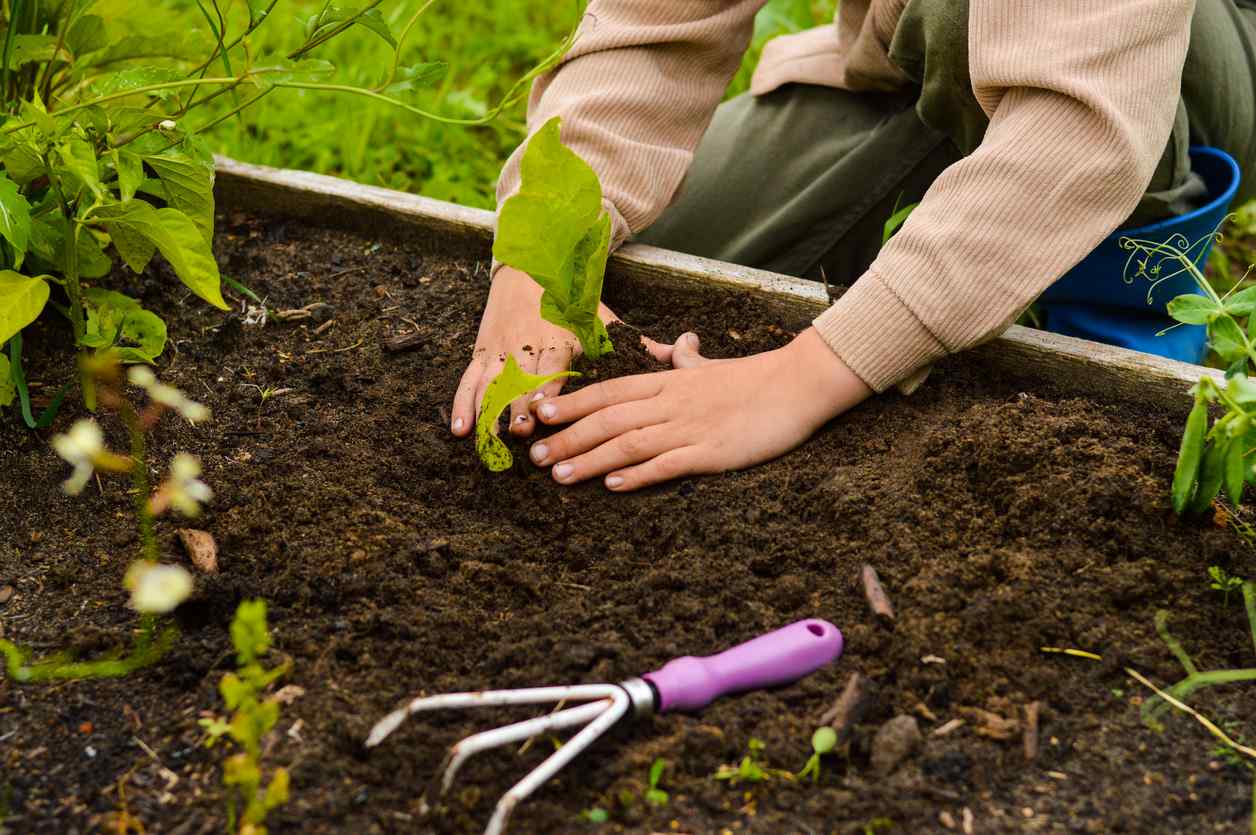
Create a plan for your vegetable garden
The best solution for planning your vegetable garden is to draw a plan. We have no doubt that you know it perfectly, but by drawing it, you will be able to postpone your plantings and better visualize the whole thing. Without forgetting that this will allow you to keep a written record for the following year to ensure better crop rotation. Here are some tips for drawing a useful and effective plan:
- When carrying out your plan, respect the scale as much as possible and make it big enough to be able to draw and write everything down.
- Draw four spaces : one for early vegetables and small fruits, one for seasonal vegetables, one for vegetables to store, and one for aromatics and perpetual vegetables.
- Possibly, materialize hedges, trees or walls to be able to take them into consideration.
- Observe your vegetable garden and indicate the orientation of the sun and the sunshine of the plots.
- If you have some supports that will be used for plantings, remember to note them.
- do not forget to trace the paths.
- Take the time to carefully and clearly report all information that may be useful.
Once this plan has been established, it will serve as a support for the rest of the planning of your vegetable garden: you will be able to complete it as you think about it.
List the vegetables to grow
The second step is to list the vegetables you want to grow. It can be difficult to choose from all the varieties of vegetables that can be found on the market. You can establish this list in the form of columns according to your needs, your tastes and your desires. You can thus have a column entitled “Essentials” and others entitled “To test”, “To store”, “Small fruits”, etc..
To establish your list, remember to consider the following criteria:
- The size of your vegetable garden: If you have a small vegetable garden, you will have to make choices.
- The size of your family and your needs: No point planning to plant enough to feed a regiment if there are only two of you. In addition, don’t forget that some vegetables do not keep, a criterion that is important to take into account when sowing. For example, it is best to spread out salad seedlings so as not to have them all at the same time, however, you can grow more tomatoes than you can consume as they can be transformed into tomato puree for conservation.
- The climate of your region and the soil of your land : These two criteria have an undeniable impact on the crops you can grow. They will therefore also force you to make choices and eliminate certain vegetables from your list.
Position the vegetables on the vegetable garden plan
Once the list of vegetables has been carefully thought out, you will have to place the different vegetables on the plots that you have drawn in order to organize everything correctly. This is the most delicate moment since it is necessary to choose the most suitable location depending on the exposure and the growth rate of the vegetables:
- Prioritize vegetables that need a lot of sun, like melons, tomatoes, eggplants, peppers, chili peppers, watermelons. Be sure to note on your purchasing list that you will need mesh to support climbing plants like melons. Furthermore, it will be necessary to enrich these plots with well-decomposed manure or compost since they are greedy vegetables.
- Then position the vegetables that take time to grow, such as potatoes, garlic, carrots, cabbage, zucchini, squash, leeks, cucumbers, etc. Remember that as they remain in the ground for a long time due to their growth slowly, they can shade other plants, which can be a disadvantage, but also an advantage: for example, you can install salad leaves at the base of cucumbers to allow them to benefit from their shade. Furthermore, for these vegetables, plan a sufficiently large plot, because, for example, zucchini and zucchini can grow or run over a large area.
- En last, position the vegetables that grow quickly such as spinach, radishes, salads. Some can be installed between the lines.
In positioning your vegetables, the other two points that need to be considered are crop rotation and crop association.
Example: You can combine leeks and carrots, but be careful, the potatoes should not be placed near the tomatoes. Crop rotation, for its part, is important since it prevents the soil from becoming depleted and diseases developing.
Add flowers and aromatics
A little above, we suggested that you draw 4 spaces. Indeed, it is interesting to devote this fourth plot to aromatic plants and flowers, because some offer good protection to your plantations against harmful insects. We know, for example, that marigolds repel nematodes.
Prepare your sowing and planting schedule
There you go, your plan is ready! Now is the time to establish your planting and sowing schedule. You can prepare a table month by month, in which you can note the dates of sowing and planting in the ground to be carried out. This way you can be sure not to miss any dates.
Order your seeds
Depending on your schedule, you can get a head start on spring by ordering the seeds you will need now. If they are not yet available, you can request to be notified when stock is renewed. Doing it this way ensures you have the seeds you need at the right time.

